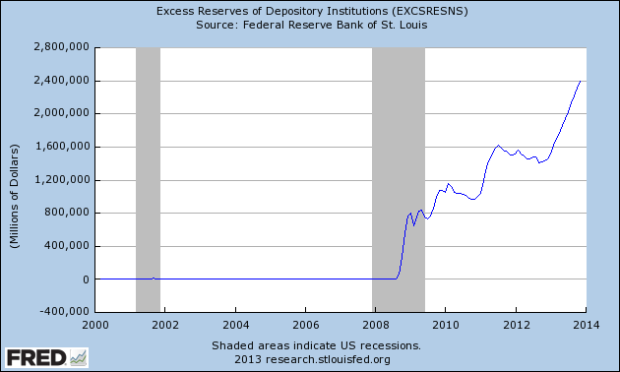Yesterday 1.3 million jobless Americans lost their unemployment benefits, thanks to Congress’s unwillingness or inability to extend long-term unemployment insurance funding. The number could rise to 4.9 million within the next year.
Extending the unemployment benefits is a no-brainer at a time when long-term unemployment rates are still higher than in any previous postwar recession, when there are three unemployed people for every job vacancy, and the money paid out in unemployment benefits quickly gets spent, thereby boosting the still-weak economy. Support for the extension is strong among the public, liberal public policy groups, and even some prominent conservatives. But Congressional Republicans continue to block it.
I’ve heard four arguments against extending unemployment benefits beyond the current 26-week threshold.
1. It encourages idleness.
Econ 101 does indeed tell us that, other things equal, anything you do to make people’s unemployment experience more pleasant, like giving them cash, reduces their incentive to take a job. Which is which unemployment benefits normally expire after 26 weeks. But these are not normal times, not with the long-term unemployment rate at 2.6%, a higher level than in any previous recession or recovery since WW2. Yet in all of those other recessions, whenever long-term unemployment got anywhere near this high, unemployment benefits were extended. If you cut off long-term unemployment benefits, some of the long-term jobless would find jobs, but the vast majority would not, unless a million or so vacancies could somehow materialize too and employers suddenly developed a preference for long-time jobless applicants. (Currently employers have a strong preference for applicants who are not unemployed, followed by those who have only been out of work for a short spell.)
A recent empirical study published by the Brookings Institution estimates that in the absence of extended unemployment benefits the unemployment rate would be about 0.1 – 0.5% lower, which we will note that is a small fraction of the current 2.6% long-term jobless rate. And the author notes that about half of that improvement would come not from the long-term unemployed rejoining the work force but from currently employed people sticking with their jobs because of the worsening of the alternative. So the estimate becomes just 0.05% – 0.25% of the long-term jobless who would rejoin the work force if benefits were cut off. Do the math, and the estimated ratio of still-unemployed people without benefits to newly re-employed is in the range of 9-to-1 to 51-to-1. Rather high pain-to-gain ratios.
2. It hurts the long-term unemployed by lengthening their term of unemployment even further, making it even harder for them to find a job.
While it’s true that employers are reluctant to hire the long-term unemployed, this argument makes the same false assumption as in (1.), namely that the jobs are out there and the long-term unemployed just aren’t looking hard enough or aren’t willing to take them. A 3-to-1 unemployed-to-vacancies ratio should give the lie to that. And the ratio of long-term unemployed to vacancies that long-term unemployed people have a realistic shot at is surely much higher.
3. It’s no longer needed, what with the economy’s recent improvement. Real GDP grew 4.1% in the last quarter, and the unemployment rate is down to 7%.
Those numbers have dominated the recent headlines, but they’re irrelevant here. Thanks to growing productivity, real GDP is now higher than it was before the recession, but with two million fewer workers. And as I seem to write in every post, the standard unemployment rate is largely irrelevant, when millions of jobless Americans have given up looking for work, millions more have left or avoided the labor force entirely, and other millions are involuntarily working part-time because they can’t find full-time work. More relevant numbers are the 13.2% comprehensive (U-6) unemployment rate; the 58.6% employment/population ratio, which has not improved since the depth of the recession; and, of course, the 2.6% rate of long-term (27+ weeks) unemployment as a percentage of the labor force. The economy’s recent good news has largely bypassed the long-term unemployed. The best that can be said about the long-term unemployment rate is that it’s been coming down, from about 4.3% four years ago, but even then it’s still as high as at any point since the 1940s.
4. It costs money.
This is the silliest objection of all, since the amount in question ($24 billion next year) is not only less than 0.7% of the budget, but a lot of the money would be returned to the federal, state, and local government in the form of tax revenues as the unemployed spend that income. Unemployed people can be counted on to spend nearly all of their benefits, especially seeing as the benefits are small compared to their previous income; the benefits level varies by state, with most states in the range of 25-45%. While unemployment benefits cost money, so do food, clothing, shelter, utilities, and all the other necessities and commitments that people have. They’re called benefits because they provide very tangible benefits to the people who receive them, far in excess of their cost to the taxpayers. (And it should be noted that the unemployed already paid into the system when they were working and will do so again if and when they return to work.)
Whatever your opinion on this issue, there should be no doubting that long-term unemployment is one of the central problems of our time. The long-term unemployed are almost 40% of the total unemployed, which is roughly twice as high as in any previous postwar recession (see graph).
While extended unemployment benefits do more good than harm, what we need even more are jobs. Government job creation is a non-starter in Congress and apparently with the public as well, so once again we are left with the Micawber-like hope that something will turn up in the private sector.
Special no-prize to the first person who can connect that last line to this video of Keith Richards:



